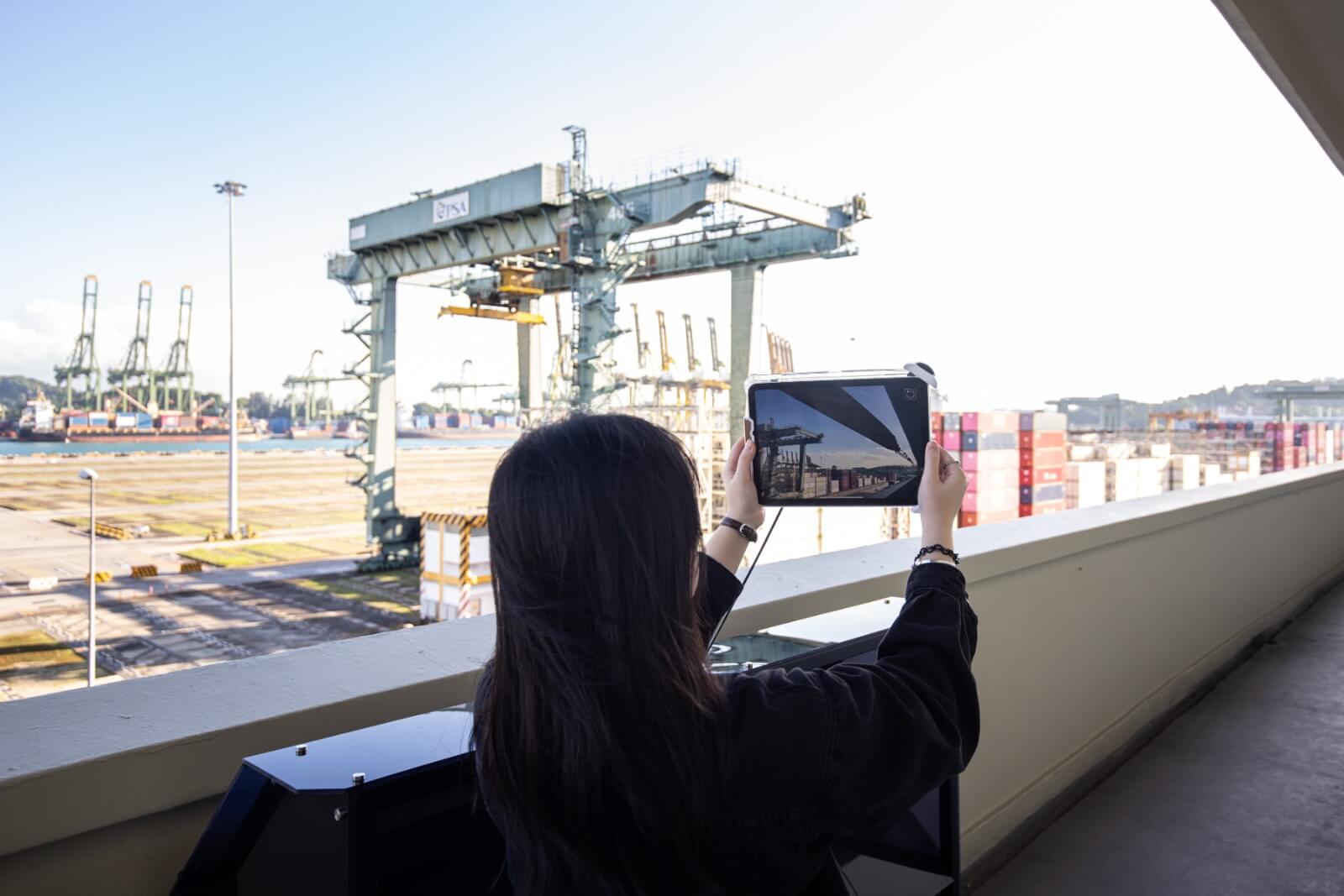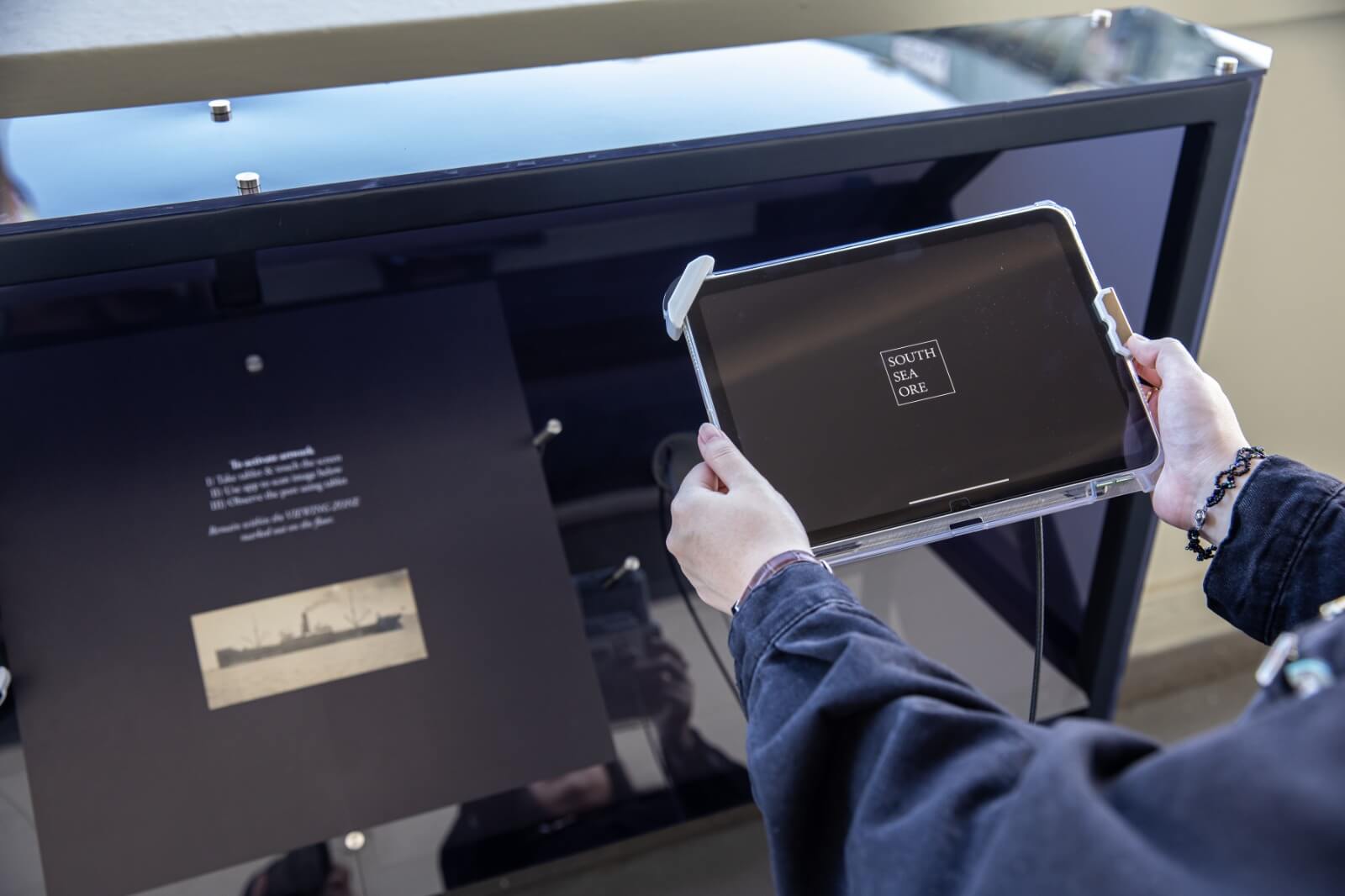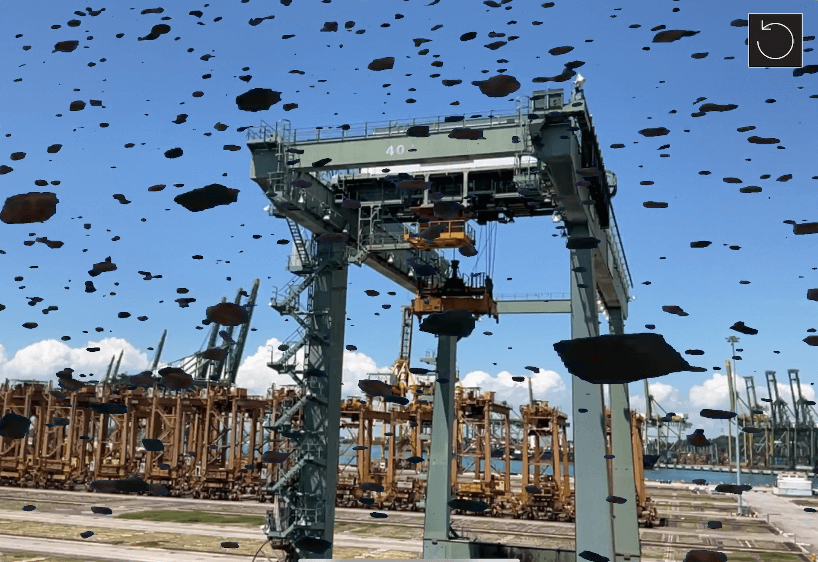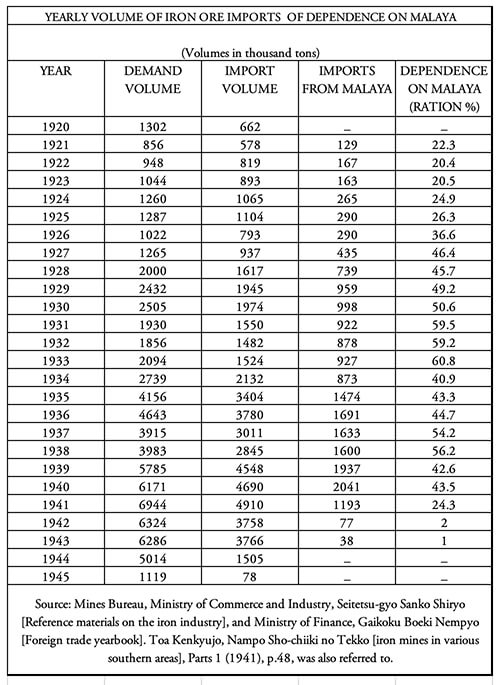日南製鐵 Rinnan Steel Mill – South Sea Ore
The artwork refers to Japan’s exploitation of British Malaya’s iron resource during the early 20th century, which was facilitated by the establishment of the mining company Nanyo Kogyo Koshi in Singapore in 1921. The Japanese-owned mining companies and steel mills that subsequently sprouted across Malaya played a pivotal role in fulfilling Imperial Japan’s modernisation and military ambitions.
Between 1921 and 1945, a total of 19.72 million metric tons of iron were shipped from Malaya to Japan, with the colonial British administration and local Malaya states— including Singapore—indirectly playing a role in this process.
South Sea Ore is activated by scanning an archival image of Nanyo Kogyo Koshi’s ship that had most likely transported the iron ore. It acknowledges the historical passage of the raw material through Singapore’s ports. Subverting the Japanese philosophy of shakkei (borrowed scenery), it offers a visualisation of the scale of its exploitation and movement against a backdrop of port operations.
Media: Augmented reality, 1:36min
Commissioned by: Singapore Art Museum
Text by: Teng Yen Hui






Source: ‘The pre-war Japanese steel industry and iron ore resources in Southeast Asia: the development of Malaysian iron ore by the Ishihara Sangyo Company’, Author: Nagura, Bunji
Email: antchin69@hotmail.com | IG: anthonychin.art